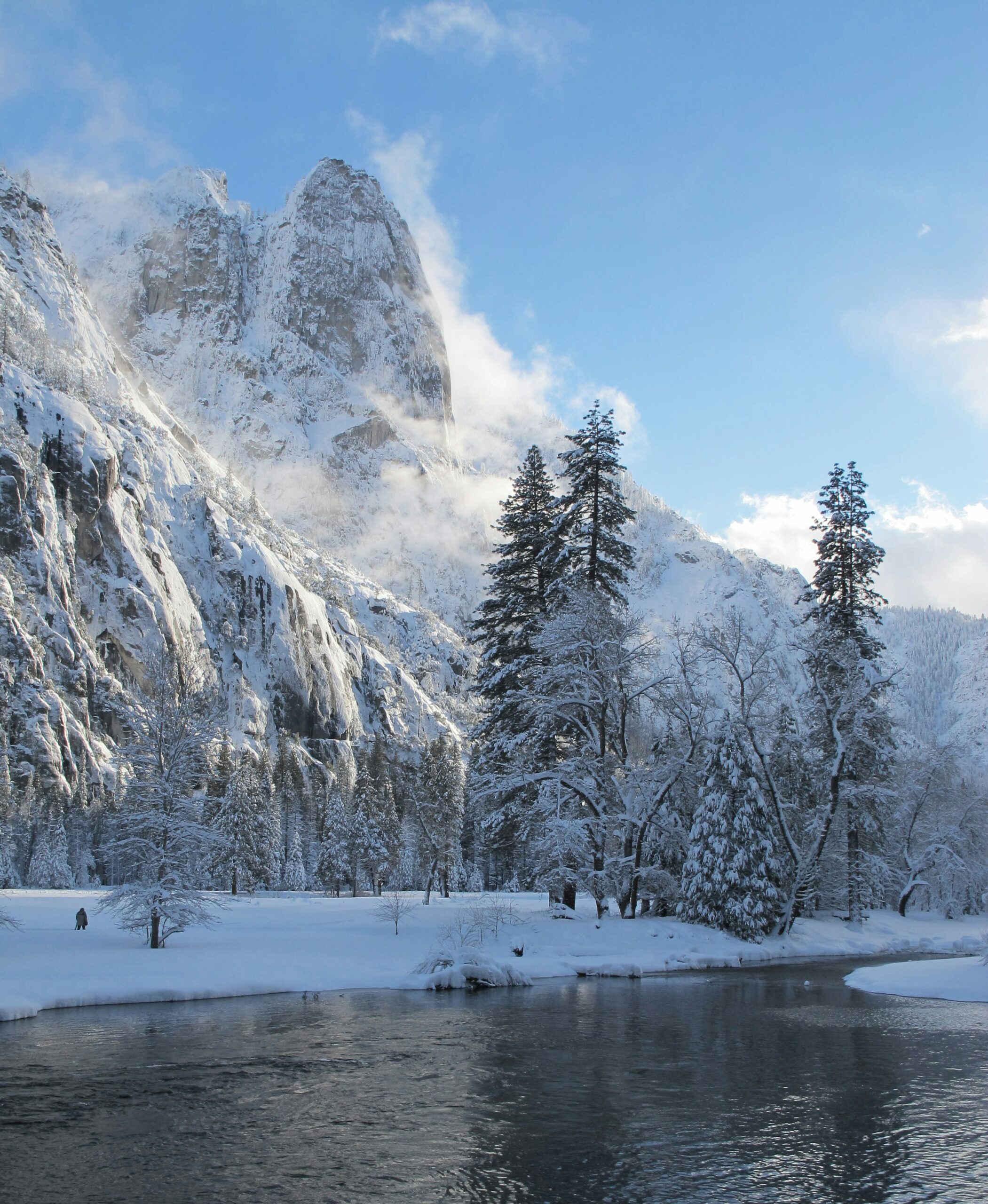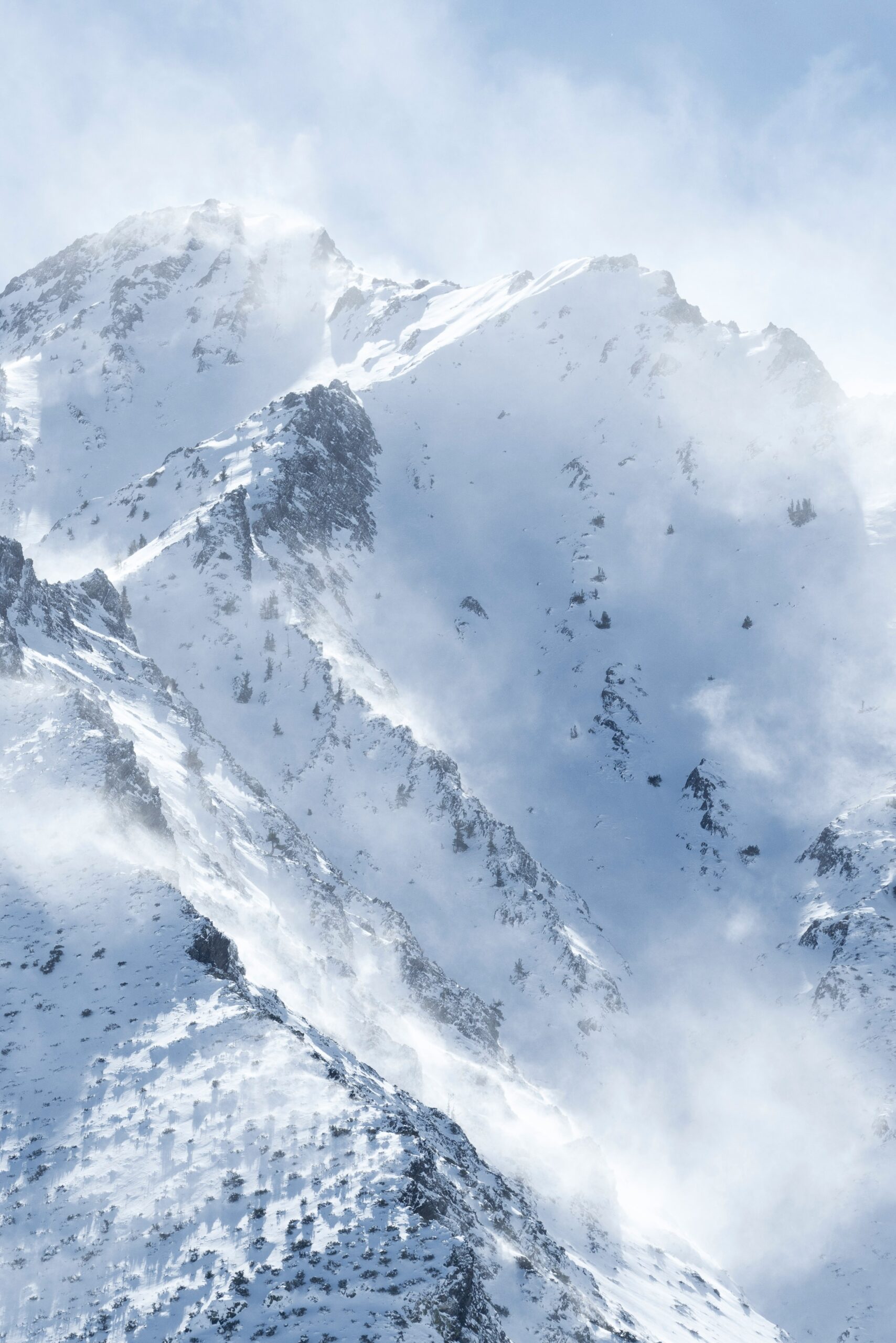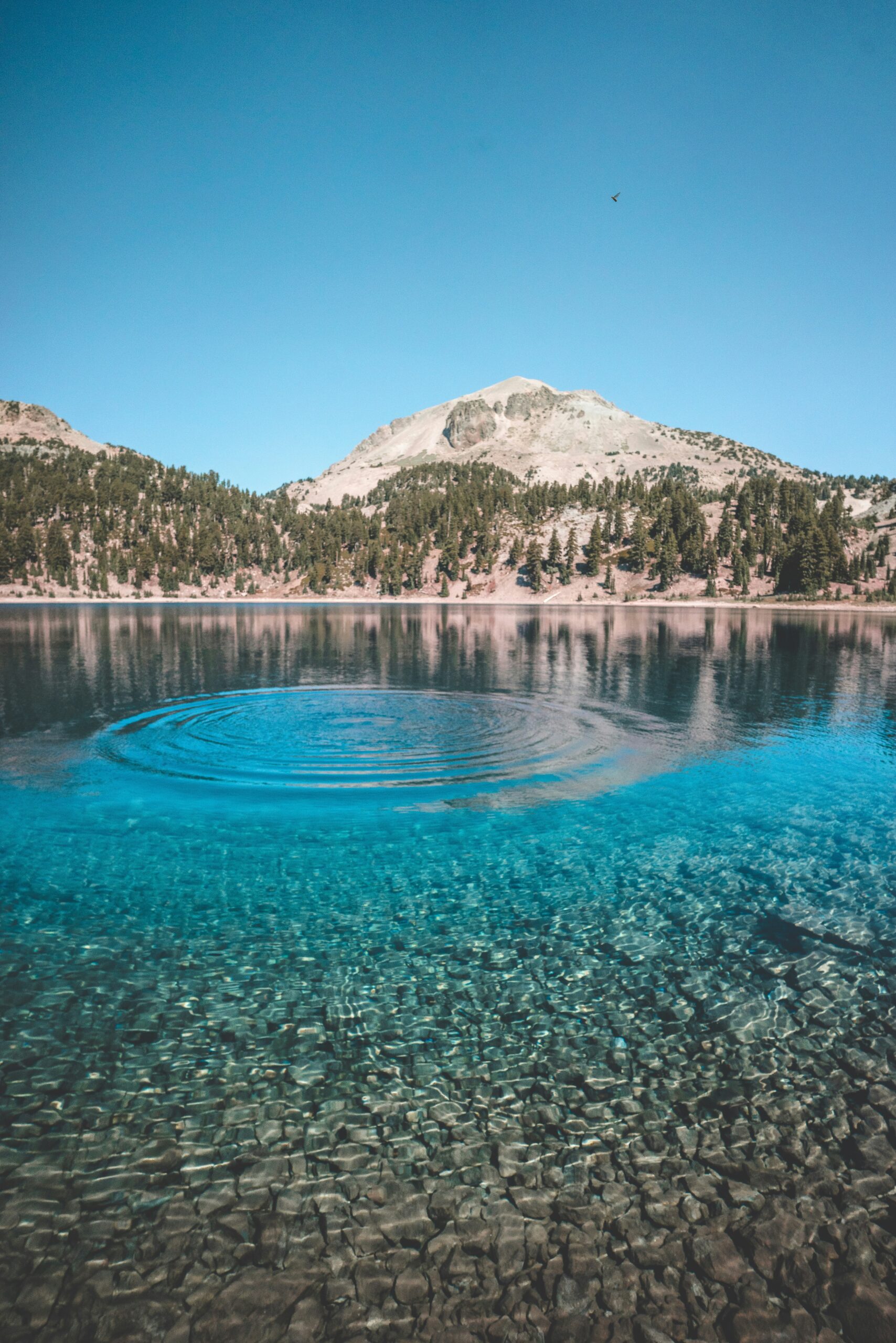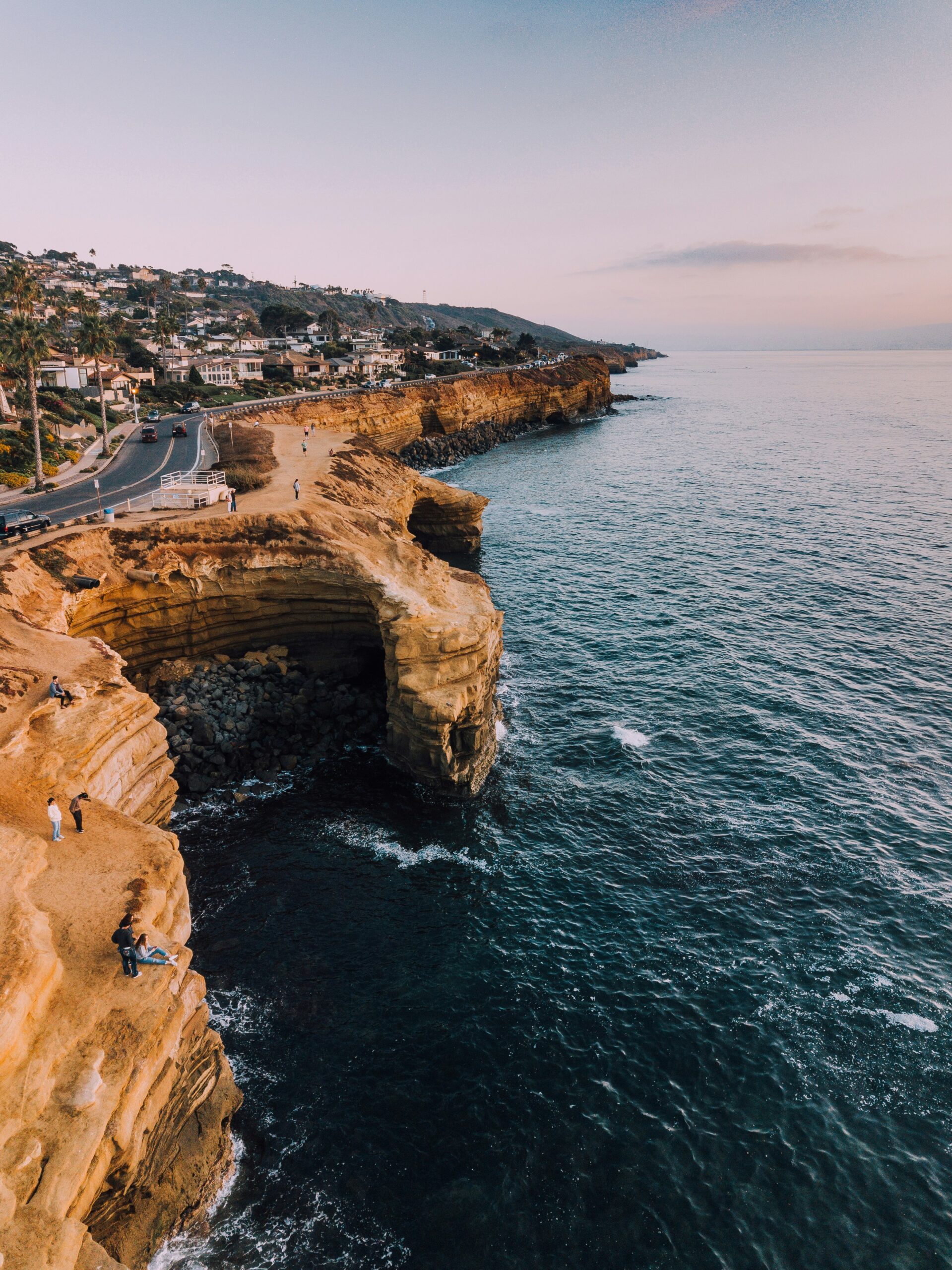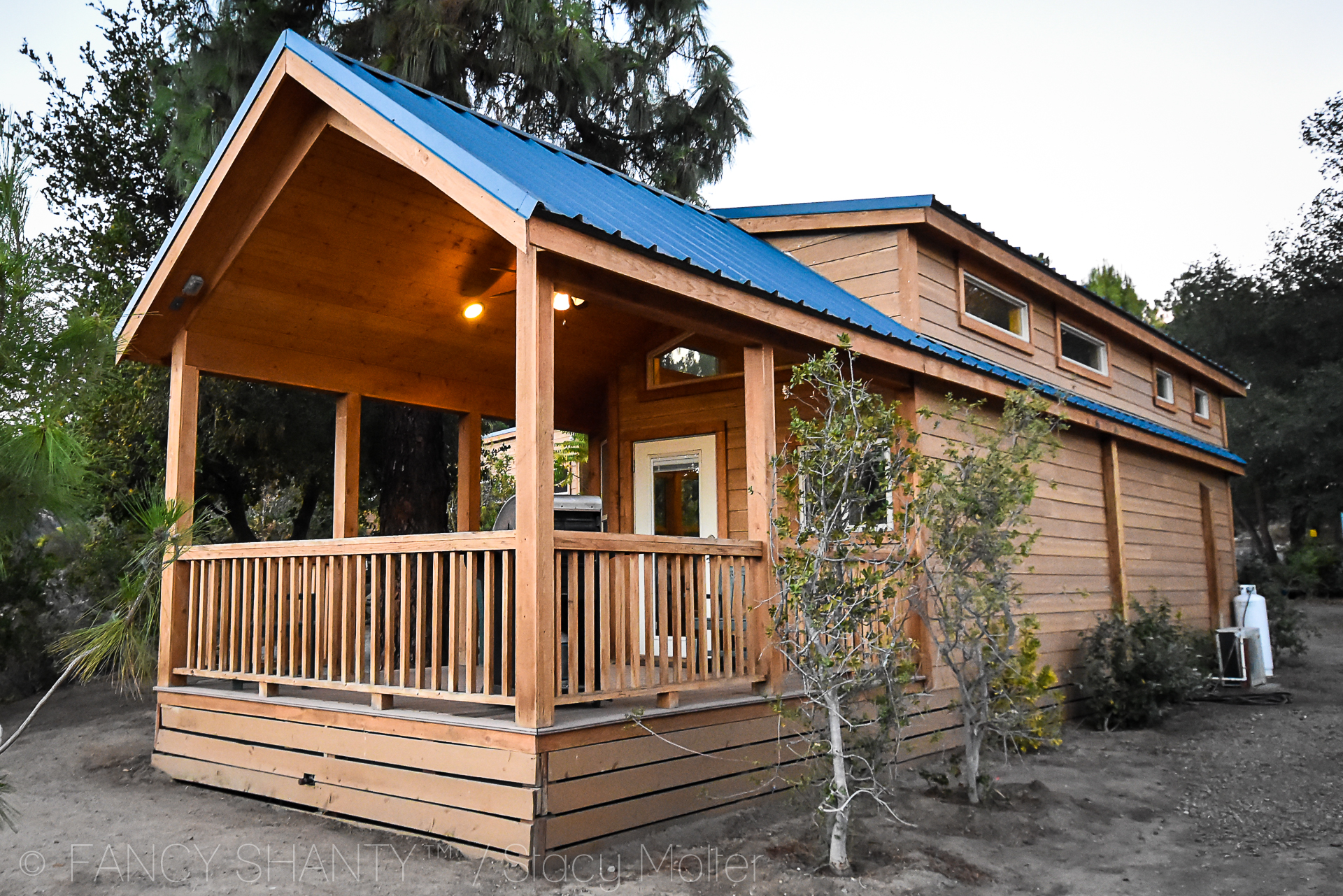Yosemite National Park Winter Road Conditions: What to Know Before You Go
Are you planning a winter trip to Yosemite National Park? It's important to stay informed about the road conditions before you set out on your adventure. Yosemite's winter road closures typically affect Tioga Road (Highway 120) and Glacier Point Road, which may close as early as November due to snowfall.
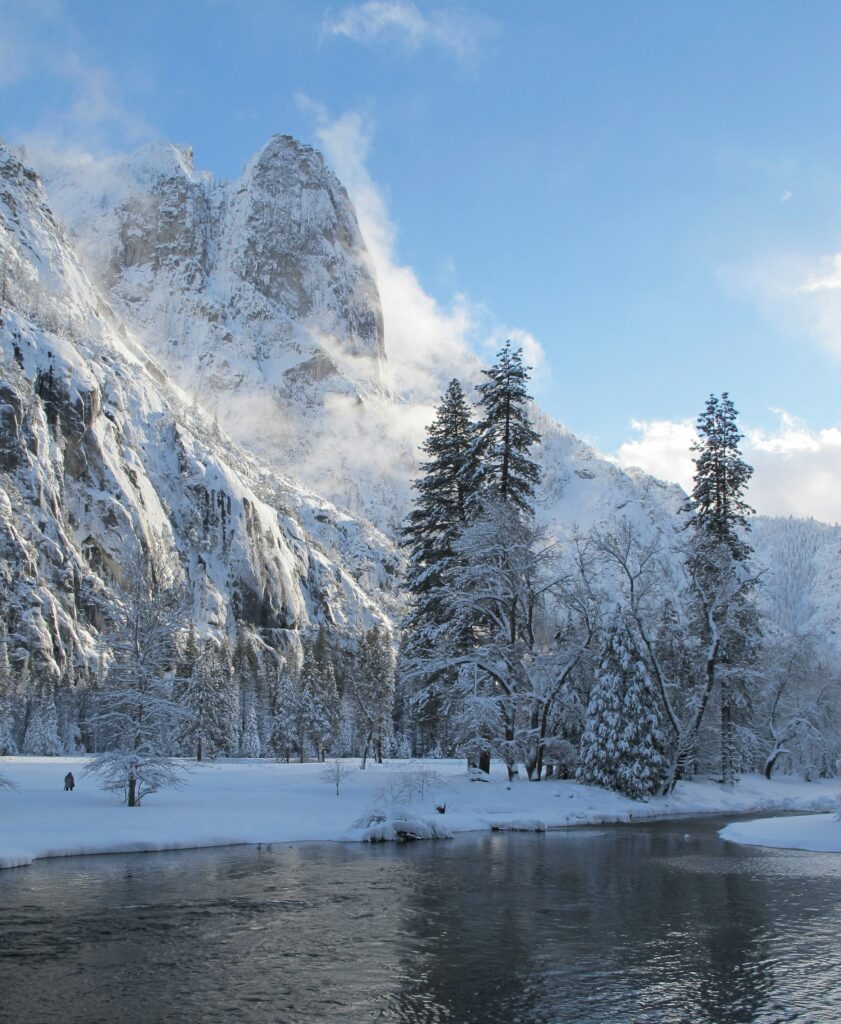
While Yosemite Valley remains accessible year-round, you might encounter icy or snowy conditions on the roads leading there. The park service works diligently to keep the main routes open, but weather can change quickly in the mountains. You'll want to check the current conditions before your visit and be prepared with tire chains.
Remember, winter in Yosemite offers a magical experience with fewer crowds and stunning snow-covered landscapes. By staying informed about road conditions, you can ensure a safe and enjoyable trip to this natural wonderland.
Yosemite National Park Winter Road Conditions: What to Know Before You Go
Preparing for Your Visit
Winter in Yosemite National Park offers a magical experience, but it requires careful planning. Your safety is paramount, so let's get you ready for an unforgettable adventure!
First, check the current road conditions before you set out. Winter weather can change rapidly, affecting vehicle traffic and access.
Pack these essentials for your trip:
- Warm, waterproof clothing
- Snow boots
- Gloves and hat
- Extra food and water
- Flashlight and batteries
- First-aid kit
Don't forget to bring tire chains! They're often required during winter months, even for 4WD vehicles.
Make sure to secure your park reservation in advance. Yosemite can get busy during winter holidays, so planning ahead is crucial.
Consider joining the Yosemite Winter Club for fun winter activities and to meet fellow enthusiasts.
Remember, winter temperatures in Yosemite Valley average around 50°F (10°C) during the day and 30°F (-1°C) at night. Dress in layers to stay comfortable as you explore this winter wonderland!
Weather Conditions and How They Affect Roads
Yosemite's winter weather can dramatically impact road conditions and accessibility. Staying informed about current conditions is crucial for a safe and enjoyable visit to the park during colder months.
Understanding Yosemite's Winter Weather
Winter in Yosemite brings heavy snowfall and icy conditions, especially at higher elevations. Snow accumulation can be significant, often leading to road closures and chain requirements.
Temperatures frequently drop below freezing, causing ice to form on roads and making driving hazardous. Winter storms can arrive suddenly, rapidly changing road conditions.
Lower elevations may experience rain instead of snow, but this can still create slippery roads and increase the risk of rockfalls. Be prepared for sudden changes in visibility due to fog or snow flurries.
Checking Current Conditions before Departing
Before your trip, always check the latest road conditions in Yosemite. The park's official website and road condition hotline (209/372-0200) provide up-to-date information.
Pay attention to weather forecasts for the specific areas you plan to visit. Remember that conditions can vary greatly within the park due to elevation differences.
Be aware of chain control requirements. Carry chains in your vehicle even if they're not required when you depart, as conditions can change quickly.
Check for any announced road closures. Tioga Road and Glacier Point Road typically close for the winter season, while other roads may close temporarily during storms.
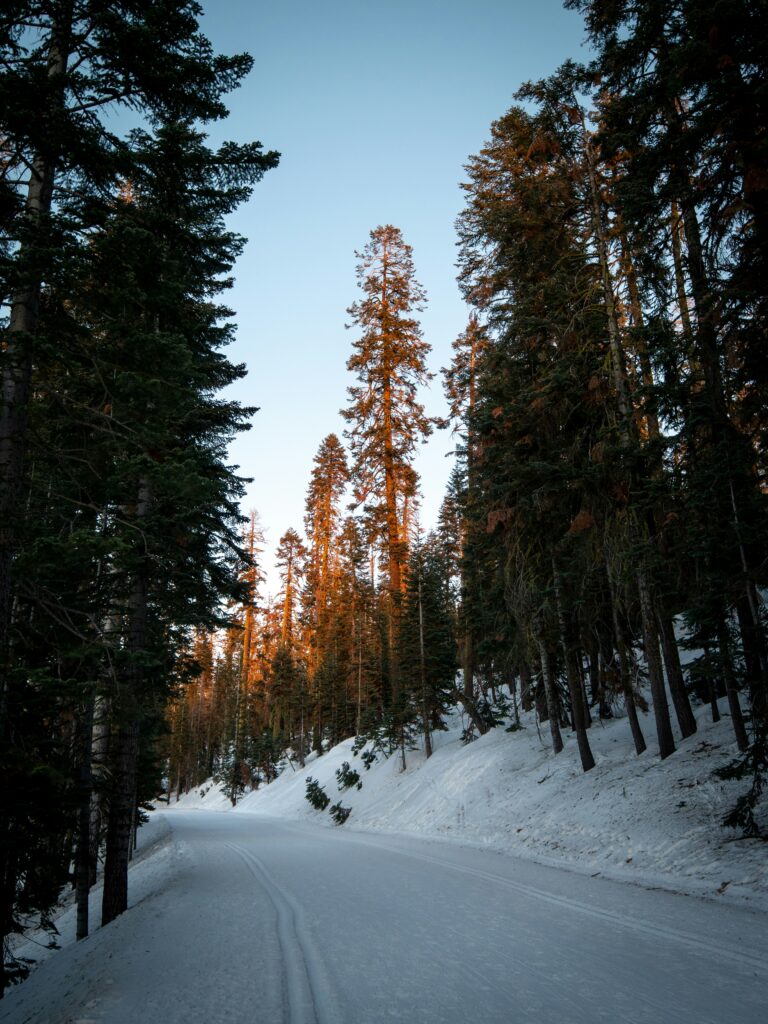
Yosemite Valley Winter Access
Accessing Yosemite Valley in winter can be a magical experience. You'll find the roads leading to this iconic destination generally remain open year-round, allowing you to witness the park's beauty draped in snow.
The Yosemite Valley roads typically stay accessible, making your winter visit relatively straightforward. You can still marvel at famous landmarks like Half Dome and El Capitan, even when surrounded by a winter wonderland.
Three main routes lead you into Yosemite Valley:
- El Portal Road (Highway 140)
- Big Oak Flat Road (Highway 120 from the west)
- Wawona Road (Highway 41)
These roads are your gateway to winter adventure. However, be prepared for changing conditions. Snow and ice can affect driving, so it's wise to check the latest road conditions before your trip.
Remember to carry chains in your vehicle. You might need them, even if you're driving a 4-wheel-drive car. The park often requires chains during winter storms to ensure your safety.
While exploring, you'll notice some seasonal closures. Certain trails and facilities may be off-limits due to icy conditions. But don't worry – there's still plenty to see and do in Yosemite Valley during winter!
Key Roadways and Their Winter Status
Yosemite National Park's winter road conditions significantly impact visitor access and travel plans. Several major roads close seasonally due to snow, while others may require tire chains.
Tioga Road and Tioga Pass
Tioga Road, which continues Highway 120 through the park, closes for the winter season due to heavy snowfall. This closure typically occurs in November and lasts until late May or early June, depending on weather conditions.
Tioga Pass, the eastern entrance to Yosemite, is inaccessible during this time. The road's high elevation (nearly 10,000 feet) makes it susceptible to deep snow and dangerous driving conditions.
If you're planning a visit during winter months, be aware that you cannot traverse the park from east to west. Alternative routes around the Sierra Nevada are necessary for cross-state travel.
As of 11/26/2024 – Tioga Road (Highway 120 through the park) and Glacier Point Road are closed for the winter
Tioga Road (continuation of Highway 120 through the park) and Glacier Point Road are closed for the season due to snow. They usually open around late May or June. Call 209/372-0200 (then 1, 1) for road conditions and tire chain requirements.
Glacier Point Road and Badger Pass
Glacier Point Road also closes for the winter season, usually from November to late May or early June. This closure affects access to popular viewpoints like Glacier Point and the Badger Pass Ski Area.
While the road is closed to vehicles, it transforms into a cross-country skiing and snowshoeing route. You can access Badger Pass Ski Area, which remains open for winter recreation, via shuttle services from Yosemite Valley.
The exact opening and closing dates for Glacier Point Road vary each year based on weather conditions. Check the park's official website for the most up-to-date information before your visit.
Mariposa Grove Road Status
The Mariposa Grove Road typically closes to vehicles in winter, but the closure dates can vary. When open, this road provides access to the Mariposa Grove of Giant Sequoias.
During winter, you can still reach the Mariposa Grove by walking or snowshoeing from the Mariposa Grove Welcome Plaza. The trek is about two miles one-way and offers a serene winter experience among the towering sequoias.
Be prepared for snowy and icy conditions on the trail. Proper winter gear and footwear are essential for a safe and enjoyable visit to the grove during colder months.
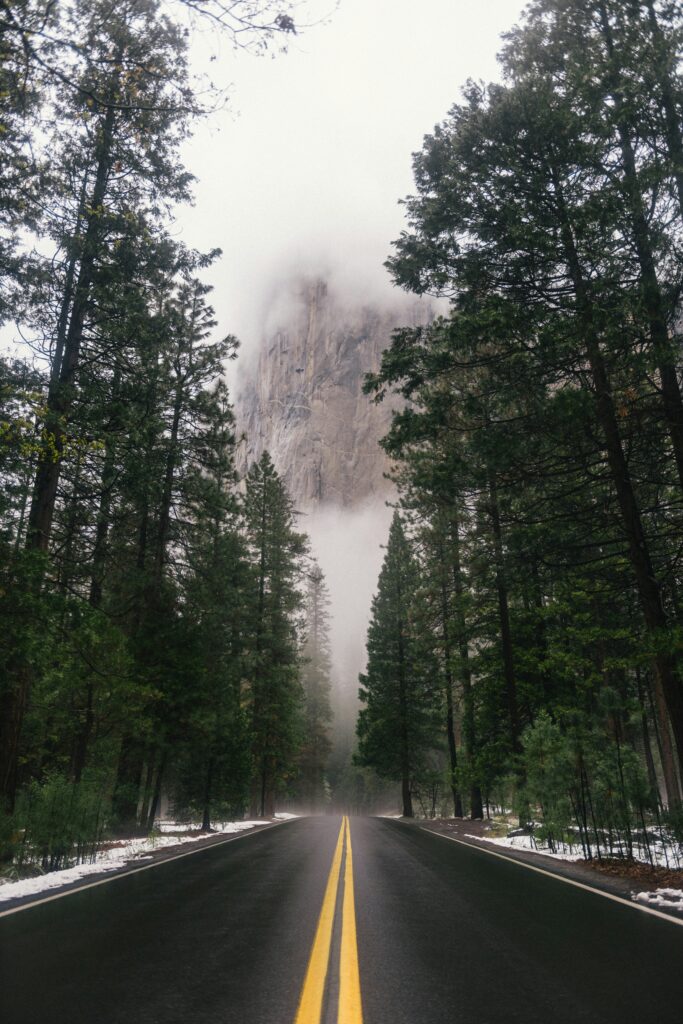
What to Do When Roads Are Closed
When winter arrives in Yosemite, road closures can affect your travel plans. Don't worry though, there are still ways to enjoy the park's beauty.
If you find the Tioga Road closed, consider exploring other areas of Yosemite. The Valley, Wawona, and Hetch Hetchy remain accessible year-round.
Look for alternative routes to reach your destination. The Highway 140 entrance is often a good choice, as it's at a lower elevation and less prone to closures.
Public transportation can be a great option during winter. The YARTS bus service operates year-round, connecting you to the park from nearby communities.
Inside the park, take advantage of the free shuttle service in Yosemite Valley. It's a convenient way to get around without worrying about driving conditions.
Always check the current road conditions before your trip. This will help you plan accordingly and avoid any surprises.
Consider staying in the park overnight. This way, you can fully enjoy Yosemite's winter wonderland without rushing back due to road closures.
Remember to pack warm clothes and snow chains for your vehicle. Being prepared will make your winter visit to Yosemite much more enjoyable, even with road closures.
Winter Activities and Transportation
Yosemite offers exciting winter adventures and convenient transportation options. You can enjoy skiing, snowboarding, and snowshoeing while exploring the park's snowy landscapes.
Ski and Snow Activities at Badger Pass
Badger Pass Ski Area is your winter playground in Yosemite. You'll find downhill skiing and snowboarding runs suitable for beginners and intermediate skiers. The area offers equipment rentals and lessons if you're new to these sports.
For a unique experience, try snow tubing. It's a fun activity for all ages and doesn't require special skills.
A free shuttle service runs from Yosemite Valley to Badger Pass during the winter season. This makes it easy for you to access the ski area without worrying about driving in snowy conditions.
Snowshoeing and Cross-Country Skiing Trails
You can explore Yosemite's winter wonderland on snowshoes or cross-country skis. Free ranger-led snowshoe walks are available from mid-December through March, weather permitting.
For a more challenging adventure, try the groomed cross-country ski trails at Badger Pass. These trails offer stunning views of the surrounding mountains and forests.
If you're up for a longer trek, you can snowshoe or ski to Glacier Point. This 10.5-mile round trip rewards you with breathtaking views of Half Dome and the High Sierra.
Remember to check trail conditions and rent equipment if needed before setting out on your winter exploration.
Hiking and Sightseeing in Winter
Yosemite National Park transforms into a winter wonderland, offering unique hiking and sightseeing opportunities. You'll find snowy landscapes and chilly temperatures, creating a magical atmosphere for your adventures.
Bundle up and explore the winter hiking trails that remain accessible. The Cook's Meadow Loop is an easy 1-mile trail perfect for beginners. You'll enjoy stunning views of Half Dome and Yosemite Falls along the way.
Yosemite Falls becomes even more spectacular in winter. The icy mist creates intricate ice formations around the falls, making for breathtaking photo opportunities.
While some areas like Tuolumne Meadows are closed due to snow, you can still admire Half Dome's snow-capped grandeur from various viewpoints in Yosemite Valley.
Don't miss the chance to visit Mariposa Grove. The giant sequoias draped in snow offer a serene and awe-inspiring sight.
Remember to check current conditions before setting out. Trails can be icy, so consider using traction devices on your boots for safety.
Winter in Yosemite provides a quieter, more intimate experience with nature. You'll encounter fewer crowds and have the opportunity to see the park's famous landmarks in a whole new light.
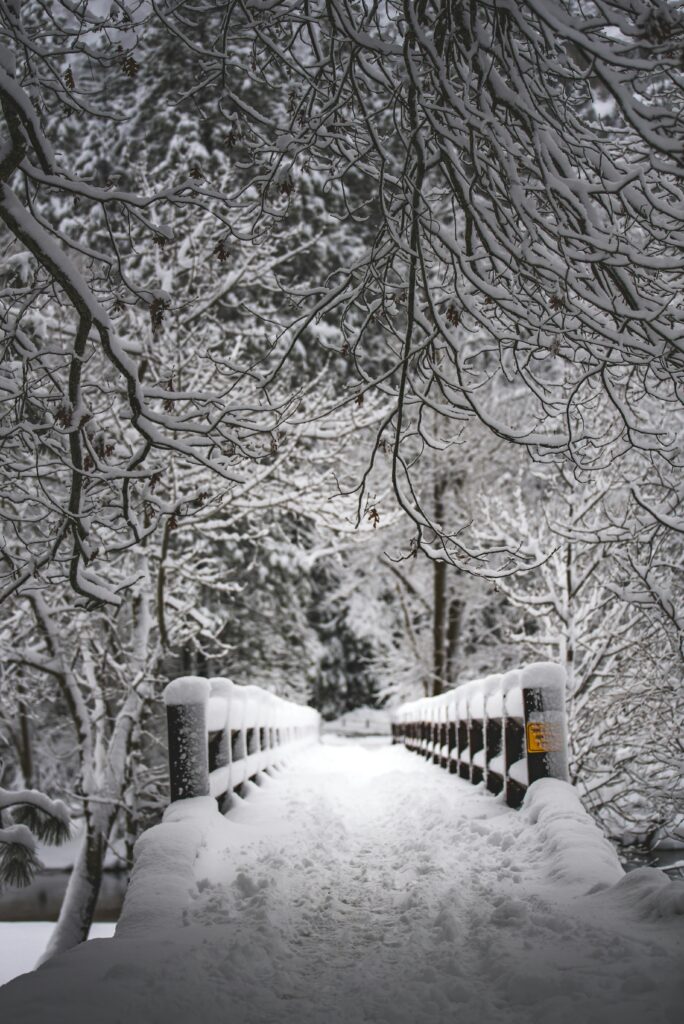
Safety Tips for Winter Visitors
Visiting Yosemite in winter can be magical, but it's crucial to prioritize safety. Winter conditions in Yosemite can be challenging, so proper preparation is key.
Make sure your vehicle is ready for winter driving. Carry tire chains and know how to use them. They're often required on park roads, even if you have a 4-wheel drive vehicle.
Dress in layers and wear waterproof boots. The weather can change quickly, so be prepared for cold temperatures and snow.
If you're venturing into the Yosemite wilderness, always let someone know your plans. Carry a map, compass, and emergency supplies.
Be aware that bears may still be active in winter. Store food properly and keep a safe distance if you encounter wildlife.
If you have a disability placard, check with park staff about accessible winter activities and facilities. Some areas may have limited access due to snow.
Stay on marked trails when hiking or snowshoeing. Hidden obstacles under snow can be dangerous.
Carry extra food, water, and warm clothing in your car. If you get stranded, these supplies could be lifesavers.
Remember, cell phone coverage is limited in the park. Don't rely solely on your phone for navigation or emergency communication.
Staying Informed with Yosemite Webcams and Updates
Keeping track of Yosemite's winter conditions is essential for a safe and enjoyable visit. Webcams and regular updates provide valuable information to help you plan your trip effectively.
Real-Time Road Conditions with Webcams
Yosemite webcams offer a live view of current conditions throughout the park. These cameras are strategically placed to show key areas, including Yosemite Valley and major roads.
You can see real-time weather, snow levels, and traffic situations. The Yosemite Valley webcam gives you a glimpse of conditions on the valley floor. It's particularly useful for checking visibility and snow accumulation.
For road-specific views, check the webcams along Tioga Road and other main routes. These help you assess driving conditions and potential closures before you set out.
Regular Weather and Road Updates
Yosemite National Park provides frequent updates on weather and road conditions. These reports are crucial for winter travel planning. You can find detailed information on road closures and restrictions on the park's official website.
Updates include:
- Road status (open, closed, or requiring chains)
- Weather forecasts
- Avalanche warnings
- Trail conditions
Caltrans also offers updates on roads leading to Yosemite. Check their website or mobile app for real-time traffic information and road work alerts.
Remember to consult these resources regularly, as conditions can change rapidly in winter. Always be prepared for unexpected weather and pack appropriate gear for your trip.
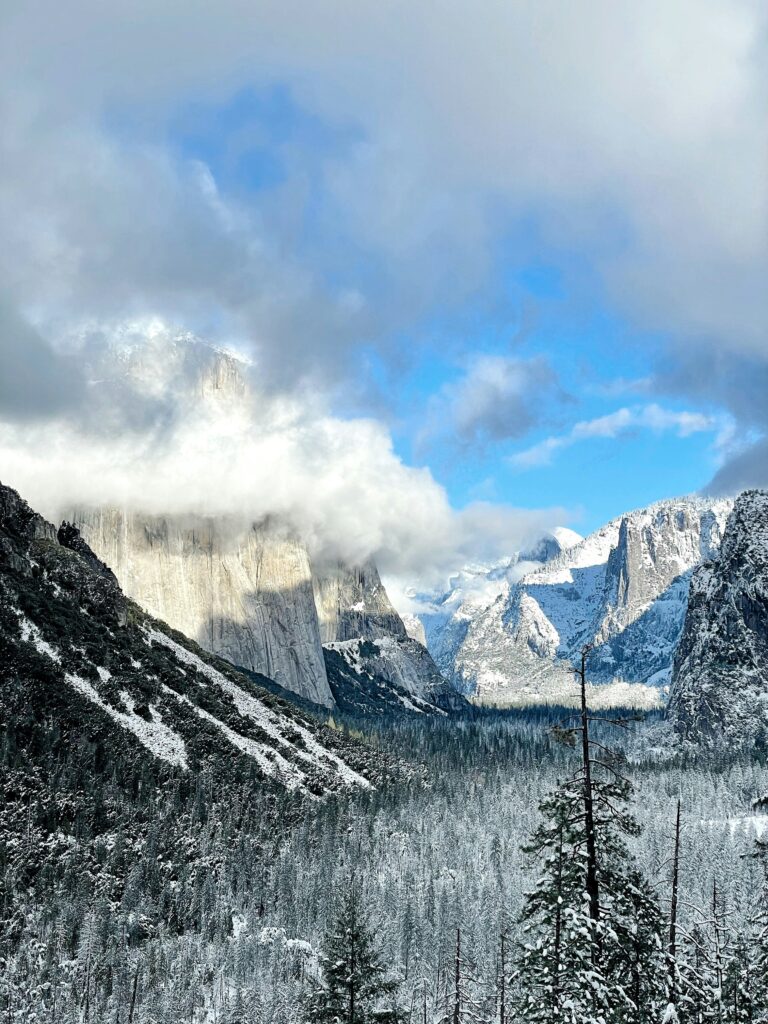
Planning for Backcountry Adventures
Ready for a winter wilderness experience in Yosemite? Before you set out, make sure you're well-prepared for the challenging conditions.
First, obtain your wilderness permit. These are required year-round for overnight stays in Yosemite's backcountry.
Pack proper gear for winter backpacking:
- Warm, layered clothing
- Waterproof boots
- Four-season tent
- Winter-rated sleeping bag
- Snow shovel and avalanche beacon
Be aware that many trails, including those near Bridalveil Creek, may be snow-covered and difficult to follow. Carry a map and compass, and know how to use them.
When planning your route, consider the shorter daylight hours and potential for rapidly changing weather. Be prepared to turn back if conditions worsen.
El Capitan's base can be a stunning winter campsite, but remember to camp at least 100 feet away from water sources and trails.
Always practice Leave No Trace principles to protect Yosemite's pristine wilderness. Pack out all waste and minimize your impact on the delicate winter ecosystem.
Stay safe by informing someone of your planned route and expected return date. Enjoy your frosty adventure in Yosemite's breathtaking backcountry!
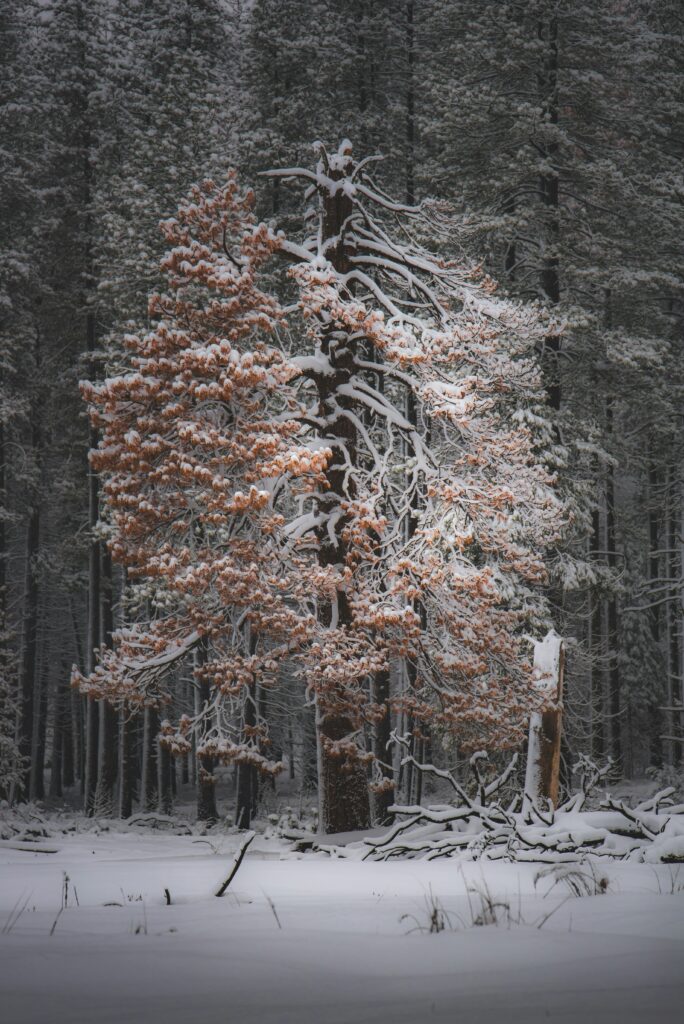
Visitor Facilities and Services during Winter
Planning a winter trip to Yosemite? You'll find several facilities and services available to enhance your experience. Many campgrounds remain open, but four campgrounds are accessible during winter. Make sure to book your reservations in advance.
If you have a disability placard, you can still enjoy the park. Accessible parking spaces are maintained year-round, and many visitor centers have wheelchair-friendly entrances.
You can drive into Yosemite during winter, but be prepared for potential chain requirements. Check road conditions before your trip by calling 209/372-0200.
Unfortunately, the bike share program is not available in winter due to weather conditions. However, you can still bring your own bike if you're feeling adventurous!
For those seeking solitude, the Yosemite wilderness offers a unique winter experience. Remember to obtain the necessary permits and bring appropriate gear for cold weather.
Key winter services include:
- Lodging options (limited)
- Food and dining facilities
- Shuttle services (reduced schedule)
- Ranger-led programs
- Winter equipment rentals
Don't forget to stop by the visitor centers for up-to-date information and to warm up during your winter adventures in Yosemite!

